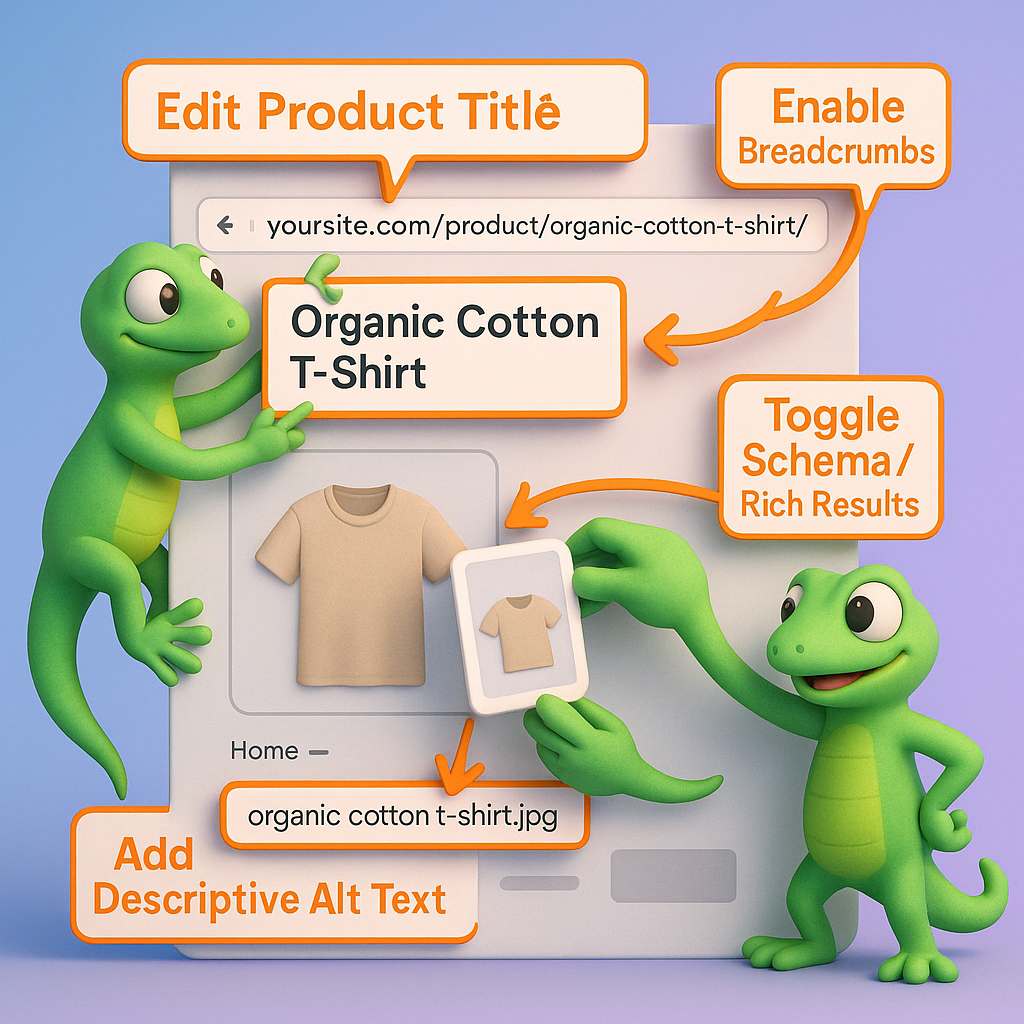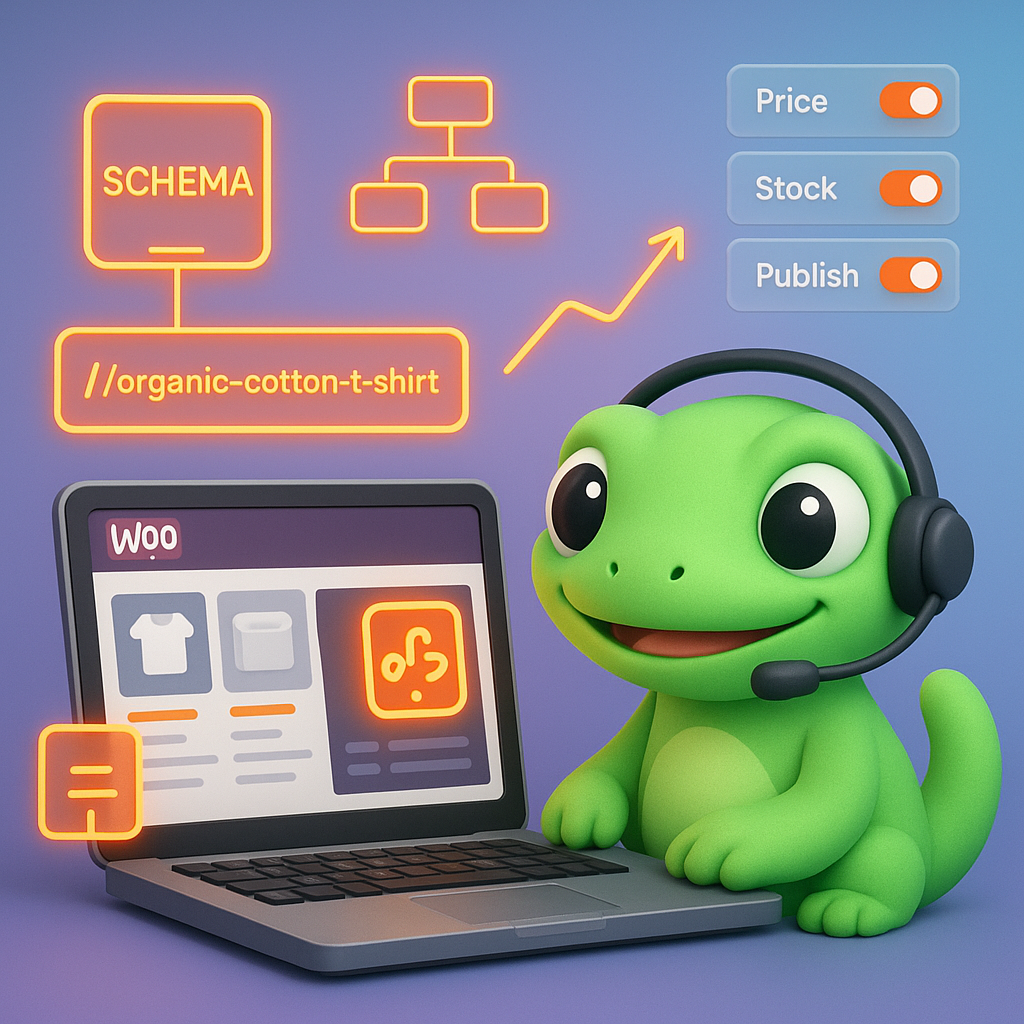WooCommerce SEO: Catalog-Aware Strategies for Store Growth
For WooCommerce merchants, SEO isn’t just another marketing channel—it’s a critical revenue driver that requires specialized approaches tailored to your product catalog. Unlike traditional websites, WooCommerce stores face unique challenges that demand catalog-aware optimization strategies.
On-Page SEO Fundamentals for WooCommerce
WooCommerce is SEO-friendly out of the box, but default settings won’t maximize your potential. Start with these essential optimizations:
Product titles should include primary keywords with important words placed first while avoiding keyword stuffing. Manufacturer-generated titles often contain irrelevant keywords and should be customized for better search performance.
A well-crafted product description serves two critical functions: helping search engines understand your product through strategic keywords and convincing potential customers to purchase through clear value propositions and scannable formatting.
WooCommerce automatically generates non-SEO friendly URLs like “yoursite.com/product/12345/” which should be edited to contain only relevant keywords. Clean, keyword-rich product URLs significantly improve search visibility.
Default: yoursite.com/product/12345/Optimized: yoursite.com/product/organic-cotton-t-shirt/Product images aren’t just for customers—they’re SEO assets when properly optimized with descriptive, keyword-rich file names and alt text that helps Google understand product visuals and can improve ranking in Google Images.

Technical SEO for WooCommerce Performance
Technical optimization creates the foundation for all other SEO efforts.
First, ensure your SSL certificate is installed and valid. This is critical for security and SEO performance, though many modern web hosts include this standard with WooCommerce/WordPress hosting.
Next, verify the “Search Engine Visibility” option is disabled in Settings → Reading to prevent discouraging search engines from indexing your WooCommerce store.
Implement proper canonicalization for product variations to prevent duplicate content issues and create a product-focused XML sitemap.
Page speed directly impacts both rankings and conversions. For WooCommerce specifically, use a caching plugin designed for ecommerce (standard caching can break cart functionality), implement lazy loading for product images, and consider a content delivery network (CDN) for media files.
Catalog-Aware Content Strategy
Content strategy for WooCommerce stores must align with your product taxonomy and inventory.
The cornerstone of an effective SEO strategy lies in meticulous keyword research to identify terms prospective customers use when searching for products similar to what you offer. This research should inform your entire content approach:
- Transactional content (product pages): Focus on purchase-intent keywords
- Informational content (buying guides, how-tos): Target research-phase keywords
- Navigational content (category pages): Optimize for browsing behaviors
Beyond standard product pages, create supporting content that addresses the complete buyer journey. Creating unique product descriptions is among the top WooCommerce SEO priorities, as duplicate or manufacturer-generated content provides little SEO value and fails to differentiate your store.
I’ve found that Google determines what ranks together, so prioritize SERP-based clustering rather than just semantic similarity when grouping product keywords. Focus on user intent when creating product page content: group keywords that serve the same purpose rather than just sharing words—e.g., “shipping software reviews” and “top shipping platforms” share intent despite different wording.
Schema, Images and Automated Publishing
Adding structured data and schema markup is essential for WooCommerce SEO, helping search engines better understand product information and can lead to rich results with pricing, availability, reviews, and product attributes.
As catalogs grow, manual maintenance becomes impossible. Common challenges include maintaining current pricing and availability, updating product details across all content, handling discontinued products, and managing seasonal inventory changes.
Modern content strategy requires addressing Answer Engine Optimization (AEO) by structuring content for AI assistants and voice search, as well as Generative Engine Optimization (GEO) by creating content that AI systems like ChatGPT will cite as authoritative, in addition to traditional SEO.
The most effective AI blog writing tools help create content that works across all three domains, using approaches like dual-format content that provides both concise answers and in-depth information.
Internal Linking and Taxonomy
Navigation isn’t just for users—it helps search engines understand your site structure.
Enable breadcrumbs for improved navigation and additional SEO value through structured data implementation. Make site navigation simple for both user experience and search engine crawling efficiency in WooCommerce stores.
For effective catalog navigation, map out related subtopics. Your cornerstone page should provide a general overview, integrating links to more detailed articles. Think of your cornerstone content as a living document that should evolve with industry changes and new insights for maintaining catalog relevance.
Strategic internal linking connects related products, connects informational content to relevant product pages, and ensures deep catalog items receive sufficient internal links.
How ContentGecko Powers WooCommerce SEO
ContentGecko helps WooCommerce stores grow search visibility and traffic by automating SEO content creation through direct catalog integration. Our approach addresses each key challenge:
Our platform connects directly to your WooCommerce store via secure plugin/API integration, enabling automatic content planning based on product data, real-time content updates when catalog changes occur, and schema markup generation tailored to your products.

We handle the entire content workflow:
- SERP-based keyword clustering that prioritizes what Google sees as related
- Content creation with dual optimization for both traditional SEO and AI answer engines
- Direct publishing with proper schema, images, and internal links
Unlike static content, our catalog-synced approach ensures updates when SKUs, prices, stock, or URLs change, monitoring of rankings, CTR, conversions, and SKU performance, and content refreshes based on performance data.
Marketing teams implementing our AI writing tools effectively report 50-70% reduction in content creation time and 20-30% increases in organic rankings for AI-optimized content. One mid-sized SaaS company implemented content scaling from 5 posts monthly to 20, resulting in a 215% increase in organic traffic within two quarters—all without expanding their content team.
Actionable Next Steps for WooCommerce Merchants
To implement catalog-aware SEO for your WooCommerce store:
- Audit your current product pages for optimization opportunities
- Set up keyword research tools like Google Keyword Planner, Ahrefs, Semrush, or try our free keyword grouping tool to identify strategic opportunities
- Implement an SEO plugin like Yoast SEO or Rank Math to manage meta tags and sitemaps
- Create a content calendar that aligns with your product categories
- Track performance metrics using tools like our SEO ROI calculator to measure impact
Approximately 30% of US marketing teams were using AI writing tools by 2022, with adoption growing at over 200% year-over-year from 2021-2022. This rapid adoption reflects the competitive advantage these tools provide.
Quality control remains essential—AI-generated content can sometimes be repetitive or generic without proper editing. Establish a review process to ensure originality and accuracy for ecommerce product descriptions.
Alternatively, explore how our website content generator can automate much of this process while maintaining the quality standards search engines and customers expect.
TL;DR
WooCommerce SEO requires specialized, catalog-aware strategies that go beyond basic optimization. From proper product schema implementation to automated content updates when your inventory changes, effective WooCommerce SEO maintains alignment between your content and catalog. ContentGecko’s platform automates this entire process, creating and maintaining SEO content that stays in sync with your product data for sustained organic growth.
